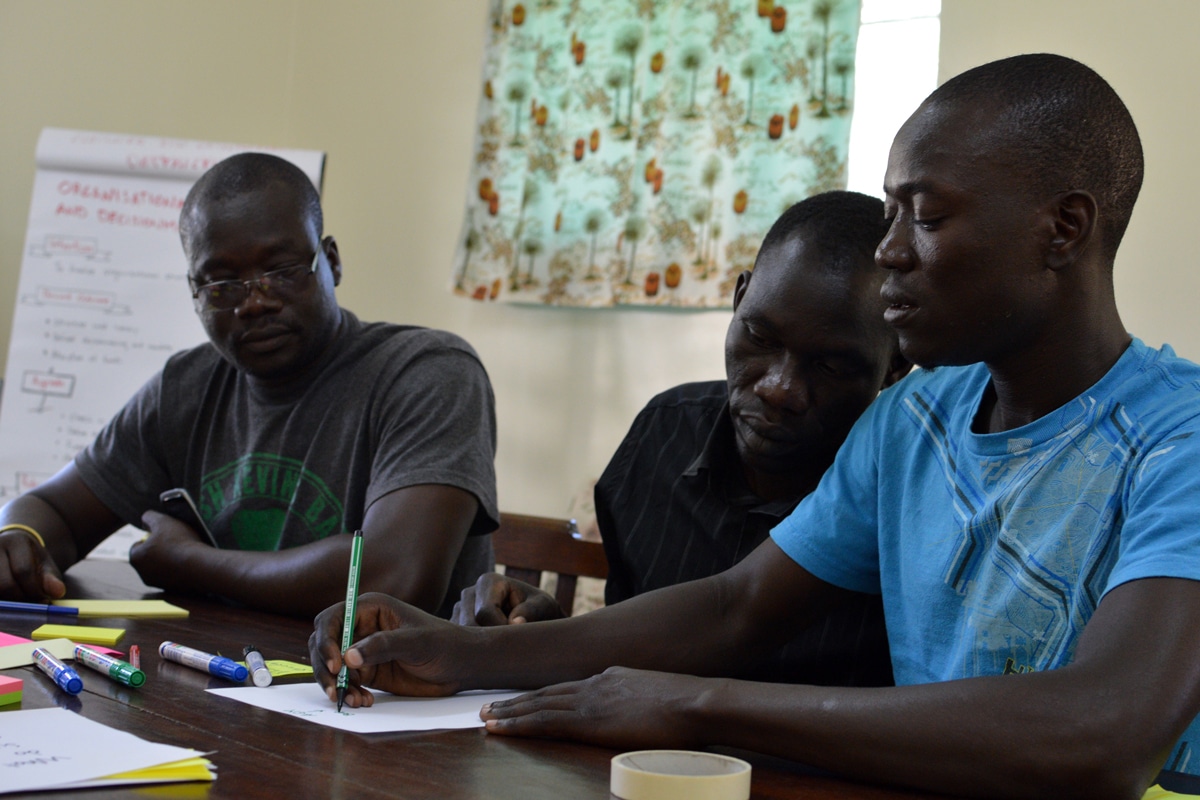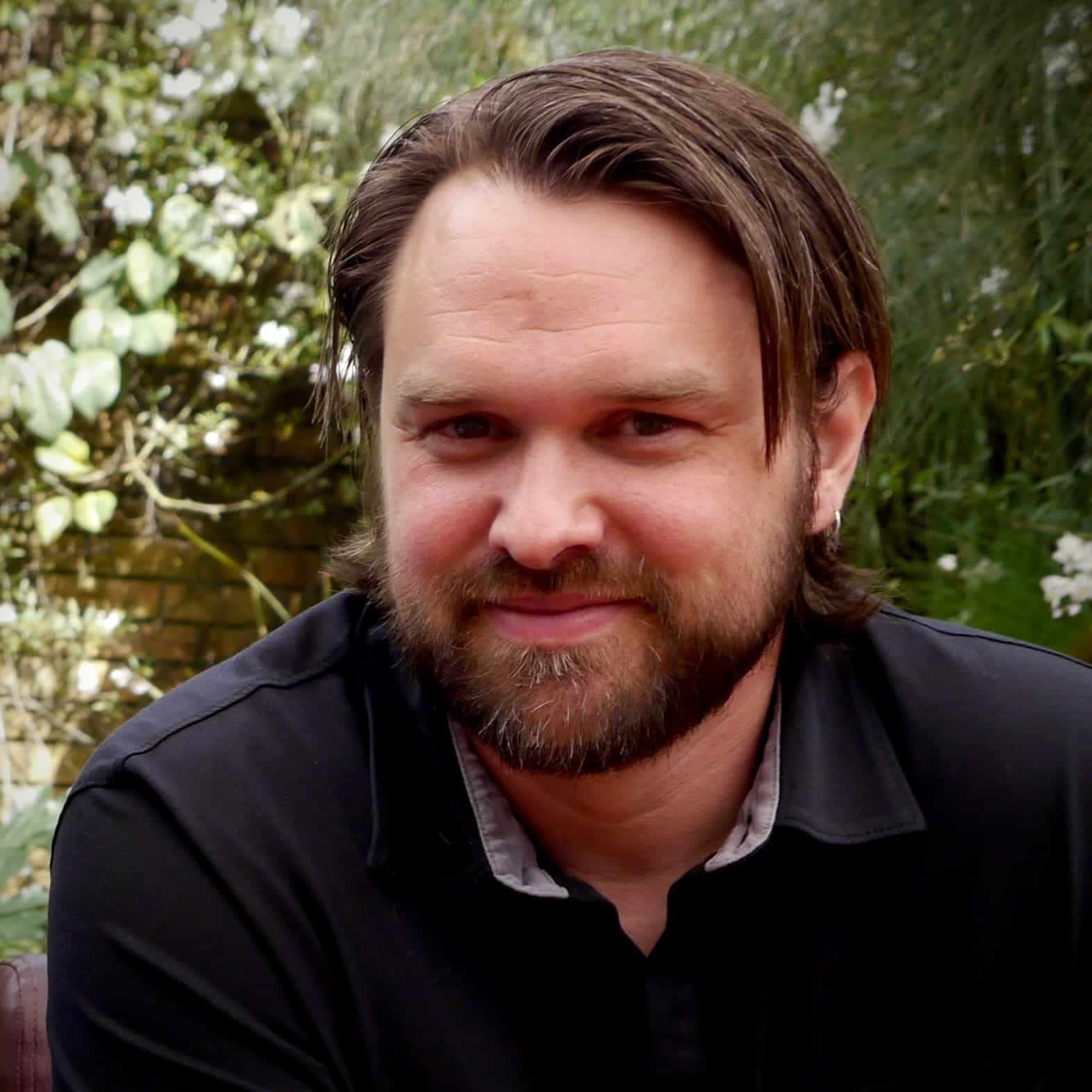Former Child Soldiers in Uganda take the Lead
by Jimmie Briggs, Goldin Institute Board of Advisors
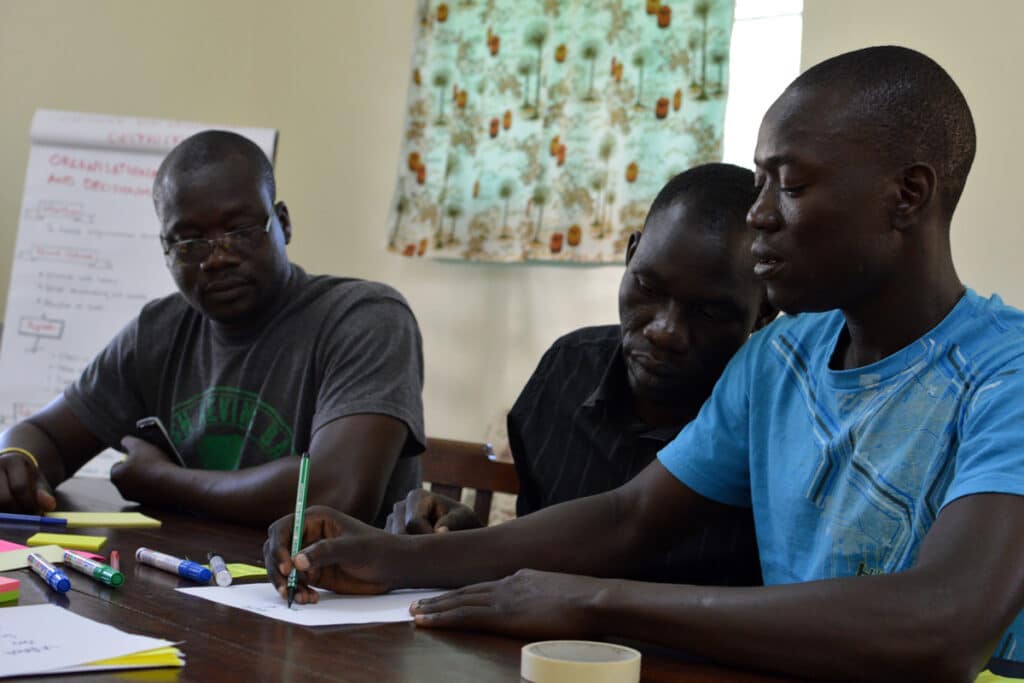
For nearly three decades starting in the late 1980’s, over 60,000 girls and boys in Northern Uganda were forcibly conscripted into fighting a guerilla war against their government, under the brutal domination of the Lord’s Resistance Army. In war that displaced 1.5 million people mainly of the Acholi ethnic group from communities such as Gulu and Kitgum, as well as the areas surrounding them, children bore an overwhelming weight not only as combatants, but also in carrying a stigma which has typically left them marginalized and overlooked as young adults today.

YOLRED, or the “Youth Leaders for Restoration and Development,” aims to address the challenges endured by former combatants with a key distinction which separates it from other well-meaning NGOs (non-governmental organizations) both local and international: YOLRED was founded by formerly abducted child soldiers to serve other young adults with the same shared experience. It is the only group of its kind to be designed, founded and led by members of the community which it serves.

Its origins come out of mobilization of just under 200 former combatants from across Northern Uganda to capture and document oral testimony about their respective experiences in the civil war. Through a partnership with the Goldin Institute and local supporters, the core team of YOLRED led the effort to collect over 150 peer-to-peer interviews with former abductees about their experiences and insights.
Not unlike child soldiers in other countries who are undergoing the formal DDR (Disarmament, Demobilization and Reintegration) process without long-term support, many of those individuals who participated in the story collection project recounted being stigmatized, left homeless and struggling in poverty. The Goldin Institute in partnership with Arigatou International and Cartitas Counseling Training Institute worked with regional Ugandan leaders to support these child soldiers to assume agency and leadership over their own destinies.
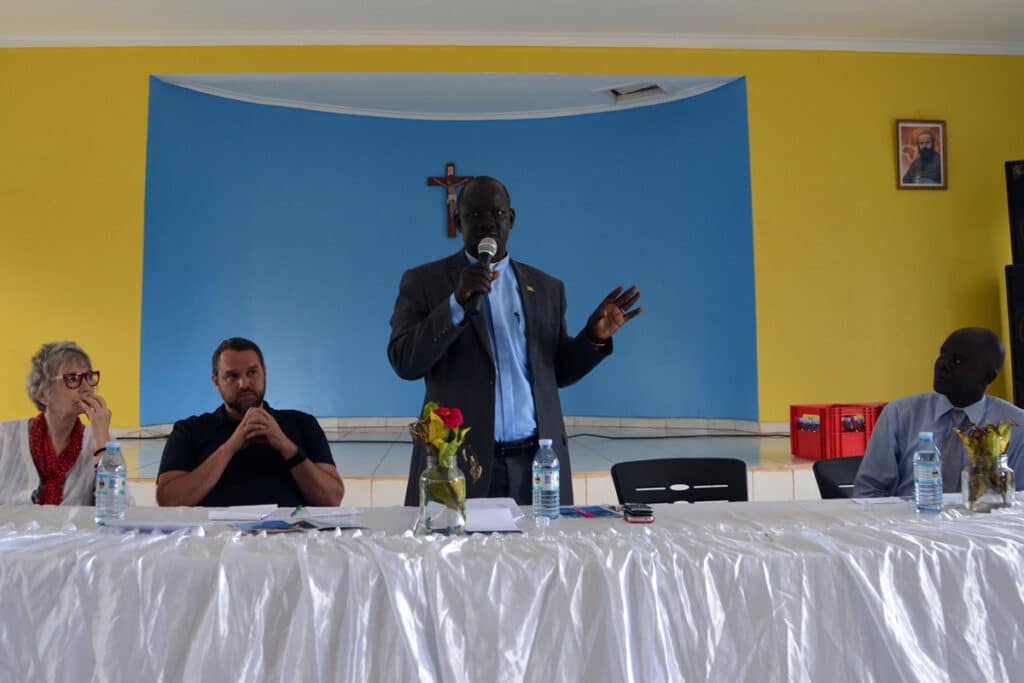
Equipped with this knowledge and the sense of solidarity developed through the research process, these community researchers produced the “Alone and Frightened” report to restore these voices to the conversation about reintegration and laid the foundation for an organization dedicated to achieving the aspirations of former combatants.
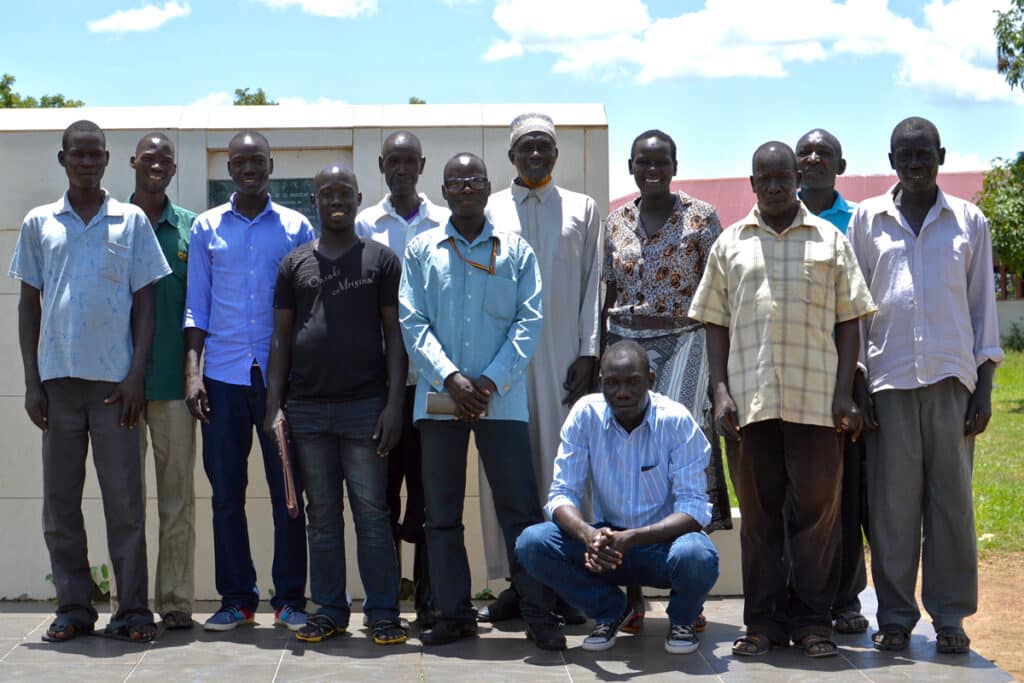
In a ceremony attended by partners from the Goldin Institute and a wide range of local partners, YOLRED was officially launched on August 27, 2016 in Gulu after years of careful planning, listening and outreach. YOLRED’s five co-founders – Geoffrey, Charles, Janet, David and Collins -- seek to support all young people who were impacted by the civil war, including ex-child soldiers, abductees, the displaced, the children of former abductees and child mothers throughout Northern Uganda. Indicators of well-being including health, education, employment and livelihood, as well as peace and security. The team is actively restoring the communities that were torn apart by the conflict and taking steps to prevent the abduction of children into conflict in the future.

In preparing for the launch of YOLRED, the team partnered with the Goldin Institute, Arigatou International and Anorak who worked with YOLRED’s leadership to develop a five-year plan detailing its organizational structure and its primary initiatives including reconciliation, entrepreneurship and agriculture.

"I am happy for Youth Leaders for Restoration and Development, as a platform for former child soldiers. As a leader of the organization, I will [help] ensure that our problems and the solutions are implemented are locally. The output of this organization must be felt and seen in the communities." -- Geoffrey Omony, Co-Founder, YOLRED
Further, the credit union scheme is not only intended to provide low and no interest loans but also financial literacy for those without bank accounts nor a credit history. Grassoots entrepreneurs will be supported in their start-up efforts and encouraged to be peer mentors to others seeking to create businesses or authentic leadership in civil society and government. YOLRED will be critically evaluating all of its programming at key stages of its development.
Presently, the organization is applying for support from the IDEO Youth Empowerment Challenge, as well as Echoing Green for general operations as well as capacity building.
We invite you to learn more about YOLRED and how to get involved at www.yolred.org.
Follow Along as Former Child Soldiers Launch Reintegration Organization

August 27th Update:
I am pleased to announce that YOLRED, the first platform for Child soldier reintegration and rehabilitation in Africa that is owned and run by the former combatants themselves, is officially launched and up and running. Our work with the YOLRED team in Uganda ended with a public gathering to celebrate the official launch of the platform.
The team was able to share their vision with the public and was received with support from the community and different official stakeholders, NGO's and religious institutions. You can download the brochure that was distributed at the launch event here.
It has been an honour to see the fruit of over four years of hard work come to a big milestone, see the members of YOLRED rise and start to carry out a vision they have had on the inside for years. View our most up-to-date slideshow below:
[slide]
[img path="images/AnorakUganda010.jpg"]YOLRED Leaders Participate in Workshop on Strategic Planning[/img]
[img path="images/AnorakUganda011.jpg"]YOLRED Leaders Meet with Community Partners Throughout Gulu[/img]
[img path="images/AnorakUganda013.jpg"]YOLRED Leaders Participate in Workshop on Strategic Planning[/img]
[img path="images/AnorakUganda014.jpg"]YOLRED Leaders Participate in Workshop on Strategic Planning[/img]
[img path="images/AnorakUganda015.jpg"]YOLRED Leaders Meet with Community Partners Throughout Gulu[/img]
[img path="images/AnorakUganda016.jpg"]Anders from Team Anorak meets with Grassroots Community Leaders in Gulu[/img]
[img path="images/AnorakUganda017.jpg"]YOLRED Leaders Meet with Community Partners Throughout Gulu[/img]
[img path="images/Anorak_August2016/dianeG.jpg"]GI co-founder Diane Goldin meets with community leaders on the project[/img]
[img path="images/Anorak_August2016/w_danes.jpg"]YOLRED Leaders and ANORAK organizers, Morten and Anders enjoy casual moment for photo opportunity[/img]
[img path="images/Anorak_August2016/geoffery_work.jpg"]Team leader Geoffery meets with Grassroots Community Leaders in Gulu[/img]
[img path="images/Anorak_August2016/trav_trav.jpg"]GI Executive Director Travis Rejman with colleague Charles Okelo and family[/img]
[img path="images/Anorak_August2016/women_colors.jpg"]YOLRED participants display the local colors[/img]
[img path="images/Anorak_August2016/dianeG.jpg"]GI co-founder Diane Goldin meets with community leaders on the project[/img]
[img path="images/Anorak_August2016/w_danes.jpg"]YOLRED Leaders and ANORAK organizers, Morten and Anders enjoy casual moment for photo opportunity[/img]
[img path="images/Anorak_August2016/geoffery_work.jpg"]Team leader Geoffery meets with Grassroots Community Leaders in Gulu[/img]
[/slide]
Currently we are supporting the team in enacting their communications and outreach plan for both local and international supporters. In particular, we are providing some consultative support over the next two weeks to help them create their own website as an ongoing place of information and updates from YOLRED. Watch for an announcement in the next newsletter for the new website!
Now lies a lot of hard but exciting work for YOLRED, but with great support from the Goldin Institute, Arigatou International and wise partners on the ground, the team feels equipped and empowered, ready to reach out to their communities. We are very excited to follow the team’s progress in this coming period.
August 20th Update:
The Uganda team is working late hours these days with Team Anorak to be ready for the launch of YOLRED that will take place in only 6 days. The team is mobilising the community though many visits to local leaders and various sites in northern Uganda, they are also putting final touches on their leadership structure and preparing all the details for the launch next Saturday.
August 19th Update:
Along with my colleague Morten, I am pleased to share an update from our first week here in Gulu, Uganda with our partners from the emerging organization, Youth Leaders for Restoration and Development (YOLRED). We are inspired by the wisdom, creativity and passion that the former child soldiers of Uganda bring to the leadership of creating and managing their own organization. For the first time, former child soldiers themselves will determine their own strategies for reintegration and prevention.
To help finalize the organizational design, we have facilitated several workshops, helping the YOLRED team clarify and document the mission, vision and principles of this new organization.

We have also together made great progress in defining the organizational structure and plan to ensure that these young leaders will have the platform and support they need to acheive their ambitious mission.
These discussions with the YOLRED leaders have been informed by a wide range of key stakeholders including leading NGO’s, government offices, religious leaders and family members.

[block title="We can see the work over the past week has been crucial on two parallel levels" bg="#ce7019"]
First, through our conversations with community partners, we are raising awareness and enthusiasm among the stakeholders in the area. At the same time, this highly creative processes with the YOLRED team is designing solutuions to the missing pieces of their strategy and bringing a deep and inspiring cohesion and shared vision with the team.
[/block]
We look forward to keeping you updated as we move towards the public launch of YOLRED in the coming weeks.
If you have questions or suggestions, we're happy to hear for you.
Sincerely,
Anders and Morten, Team Anorak
A Call for Proper Justice

Our Executive Director, Travis Rejman recently wrote this editorial in the Huffington Post calling for the right justice to be considered in the case against Dominic Ongwen.
Ongwen has received international attention because of his role as a high-ranking soldier in Joseph Kony's Lords Resistance Army. To be sure, his crimes against humanity are not to be debated - as a leader within the LRA, Ongwen's actions were responsible for thousands of children and their families being killed, maimed and displaced. As Travis penned in his piece:
[quote]Major General Ongwen's roles in these atrocities is not in question. Demanding justice is not in question. The meaning of justice is."[/quote]
Because Travis co-authored the Huffington story with our longtime partner in Uganda, the retired Reverend Baker Ochola, the proper context was able to be provided on the nuanced meaning of what justice would be in this case, especially to those in the communities most impacted by Ongwen's actions. To many in these communities, Ongwen first and foremost was a victim himself in being abducted into the LRA as a child soldier.
The overwhelming call, especially by religious leaders in those communities, points to the desire for Dominic Ongwen to be returned to his homeland, where he can face justice at the hands of those most informed to determine what this will look like. To them, a faraway international court like the ICC is not the proper authority to prosecute and punish a former member of their own community. Read on for the full story at this link.
Update: Since the publication of the Rejman/Ochola piece in January, the International Criminal Court ruled that it would be holding over Dominic Ongwen for full trial at the Hague. We will continue to follow this story.
Child Soldier Map Stats

-
300KThere are more than 300,000 child soldiers in the world today.
-
40%More than forty percent of child soldiers today are girls.
-
18Child soldiers are used in at least 18 countries all across the globe.
-
100KMore than 100,000 child soldiers have demobilized in the last twenty years.
Alone and Frightened: A Summary of our Report
 In the discussions about disarmament, demobilization and reintegration of children used as soldiers in the conflict in Northern Uganda, the voices and perspectives of former child soldiers themselves have too often and too long been ignored.
In the discussions about disarmament, demobilization and reintegration of children used as soldiers in the conflict in Northern Uganda, the voices and perspectives of former child soldiers themselves have too often and too long been ignored.
To restore these voices to the discussion and to improve the services for former combatants, the Goldin Institute and local partners trained a group of former child soldiers in "Community Based Oral Testimony" as a tool for gathering these stories and perspectives. Through this project, former child soldiers themselves led the research collection through interviewing over 150 of their peers and together reflecting on common concerns and shared aspirations.
The results of this groundbreaking research are contained in the report, Alone and Frightened. Equipped with this knowledge and the sense of solidarity developed through the research process, the former child soldiers are now at the forefront of convening the National Platform for Child Soldier Reintegration in Uganda as a network for coordinating the work of NGOs, government agencies, religious communities and other partners who are working together to promote reconciliation and reintegration.
[quote]Child Soldier definition: A child soldier is one under the age of 18 and part of a regular or irregular armed force or armed group participation directly indirectly. Child soldiers perform a range of tasks including combat, laying mines, and explosives; scouting, spying, acting as decoys, couriers or guards; training, drill or other preparations; logistics and support functions, pottering, cooking and domestic labor; and sexual slavery or other recruitment for sexual purposes."[/quote]
- UNICEF 2003
 This study describes the state of children affected by the brutal war in Northern Uganda pitting the Lord's Resistance Army (LRA) against the Uganda People's Defense Forces (UPDF). These are stories of Former Child Soldiers (FCS), please use your discretion as these stories are both horrific and heart-rendering.
This study describes the state of children affected by the brutal war in Northern Uganda pitting the Lord's Resistance Army (LRA) against the Uganda People's Defense Forces (UPDF). These are stories of Former Child Soldiers (FCS), please use your discretion as these stories are both horrific and heart-rendering.
The study sought to achieve the following objectives:
- To facilitate a platform for FCS to share their experiences and challenges of abduction and escape from captivity.
- To establish the community and family perceptions and attitude towards FCS.
- To identify gaps in the implementation of the Cessation of Hostilities/Juba Peace Agreement (CHA) (2006), agenda item V on DDR, the institutional mechanisms and the current state of FCS with regard to DDR.
- To establish and highlight the locally-generated and FCS-based frameworks for reintegration.
- The content scope of this research was to document and analyze the experiences and challenges of FCS with regard to their reintegration into families and communities within the CHA broader agenda item V.
Design:
A total of 180 primary informants were purposely selected out of 264 interviewed using the principles of participatory feedback and primary respondent-centered ownership of the research. Of respondents, 52% were male, and 48% were female.
Key Findings:
Females seemed more unwilling to respond to the the participation due to fear of being identified, fear of community reprisal or, a manifestation of inadequate or lack of psycho-social support.
- The majority of children abducted (58.9%) were 15 years of age and below, a clear indication of loss of childhood including schooling for many, in addition to horrifying traumatic experiences.
- Major health issues were identified among FCS including bullet wounds and fragments in the body, septic wounds, fistula, HIV/AIDS and cardiac problems.The physical scars or bullets lodged in their bodies has rendered some of them unable to find spouses or fend for themselves.
- Of the 87 females interviewed, 39 returned as child mothers.
- While 60% of the abducted children found themselves in the hands of Uganda People's Defense Forces (UPDF) and later reception centers, many (40%) did not receive initial counseling and support. Many experienced constant death threats, spiritual initiation rituals ranging from sitting on dead bodies to having sex with an older person, lasting 1-6 years in captivity. Thus, one can understand the extreme levels of trauma and lack of livelihoods among FCS currently.
- Large portions of FCS expressed concerns of psychological suffering and/or trauma as a result of their experiences in captivity, including but not limited to, nightmares, anxiety and fits of anger, as well as alienation, appropriation, dispossession, guilt, loneliness, and poor relation with others (aggression, shouting, commanding, etc.).
- Over half found either one or both parents dead. This means a sizable number returned as orphans, with a greater number losing their fathers.
To learn more about the next steps and the multi-sector network promoting reintegration and reconciliation, click here to read about the work of the National Platform for Child Soldier Reintegration and Prevention in Uganda.
The following slideshow includes recent ESPERE workshops featuring our colleagues in Uganda and Kenya. Many of the participants represent the aspirations detailed in the Alone and Frightened Report.
[slide] [img path="images/slideshow/full/uganda2014_1.jpg"]Co-founder's Diane Goldin and Travis Rejman meet with Everest Okwonga, the Principal at St. Janani Luwum Vocational Training Centre[/img] [img path="images/slideshow/full/uganda2014_2.jpg"]Co-founder's Diane Goldin and Travis Rejman meet with students at a trade school for former child combatants in Gulu[/img] [img path="images/slideshow/full/uganda2014_3.jpg"]Co-founder Diane Goldin meets with students in a Gulu classroom during the Institute's June2014 trip to the region to take part on child soldier reintegration efforts[/img][img path="images/slideshow/full/uganda2014_4.jpg"]Participants of a workshop conducted by Global Associate Lissette Mateus Roa take part in one of the exercises teaching 'forgiveness'[/img][img path="images/slideshow/full/uganda2014_5.jpg"] Global Associate Lissette Mateus Roa (bottom left) and her group of ESPERE students. Also included is friend and colleague and Associate emeritus Dr. Dorcas Kiplagat (standing 5th from right)[/img] [img path="images/slideshow/full/uganda2014_6.jpg"]Participants of the ESPERE workshop during a training session[/img][img path="images/slideshow/full/uganda2014_7.jpg"]Global Associate Lissette Mateus Roa (standing) leads a training session in Gulu[/img][img path="images/slideshow/full/uganda2014_9.jpg"]Global Associate Lissette Mateus conducts an exercise with participants of the ESPERE workshop in June 2014[/img][img path="images/slideshow/full/uganda2014_15.jpg"]Global Associate Lissette Mateus (sitting foreground) leads her ESPERE training group[/img][img path="images/slideshow/full/uganda2014_28.jpg"]Co-founder Diane Goldin meets with students at the St Janani Vocational School. The School is made up of mostly former child soldiers learning new skills (like carpentry in this classroom) to rejoin civilian life.[/img] [img path="images/slideshow/full/uganda2014_27.jpg"]The workshop attended by former child combatants[/img][img path="images/slideshow/full/uganda2014_34.jpg"]Institute co-founder Diane Goldin meets with Ajok Dorah - a psychologist specializing in giving counsel to former child combatants returning to their communities.[/img][/slide]
This Week in GI History and Building on a Key Past Event

This week we mark the anniversary of one of the Institute's defining events: the 2003 Building Social Cohesion in the Midst of Diversity and Migration conference held in Manresa, Spain.
At that Event, community leaders from over 20 cities gathered to explore best practices from their practical experiences building social cohesion. The Conference came together over the central questions of:
- How do we promote a positive view of difference and build a sense of social cohesion in the midst of diversity?
- Where have people been effective at building relationships of trust, understanding and cooperation between diverse communities?
- How can we best learn from those communities that have successfully built trust amongst their diverse communities?
The collaborative learning, strategies and conversations at the Event provided tools for participants to bring solutions back to their respective cities. To find out more on how this was accomplished, view the full report on our findings of the conference. here.
In the time since we held the Manresa Event, the issue of how communities in sizable cities overcome the division and tensions often caused by their diverse populations, remains as relevant as it was in 2003. In many ways, we were fortunate to make the connections with a group of talented and committed leaders willing to address the issue head-on, as it has proven to be prescient and set the tone for future project work.
Which brings us to new events and the ways in which we continue to honor our mission, and honor those we work with dedicated to bringing social cohesion to their communities. This week, two of our associates from Chicago, Alexis Smyser and Srishtee Dear, are in attendance with our colleagues in Colombia at the Foundation for Reconciliation conference in Bogota. Here, participants from several countries review and reinforce the key principals of the ESPERE methods that the Foundation has been refining since first introducing in 2007.
The ESPERE methodology is engaging new community leaders, former child soldiers and educators in the proven concepts of reconciliation and forgiveness. What began as a grassroots project by Fr. Leonel and his team in Bogota less than a decade ago has now flourished to see participation throughout North and South America and recently to Africa. Partners of the Goldin Institute in Uganda have taken up the ESPERE methodology and have used is as a powerful tool in the reintegration for former child soldiers.
[hl bg="#d07000" fg="#ffffff"]Continue to follow us as we share new learnings and outcomes from this latest conference in Bogota. See how the common theme of social cohesion that began 12 years ago in Manresa is alive and well and being proven highly adaptive in new environments and by new leaders bringing positive change to their communities.[/hl]
[slide][img path="images/2003___17.jpg"] Goldin Institute co-founder Diane Goldin with participants at the 2003 Maresa, Spain Event. [/img] [/slide]
Poignant Child Soldier Stories Connect with Wider Audience

In our own efforts to try and get the word out about the plight of child soldiers, and the progress that is being made towards former young combatants we work with in returning to civil society – we're always interested in new ways to connect with those who wish to help.
Visiting our website, you will find the personal stories of those involved in bringing attention to the issue, while they also work on sustainable and proven ways to create positive change in their communities, so that fomer child soldiers have opportunites for positive change in their own lives. Whether bringing you the ongoing project work we are doing in Colombia and Latin America with our two associates Lissette and Fr. Leonel, or updating you on the expansion of the successful national platform we helped develop with our colleagues on the ground in Uganda, we continue to explore ways to make a difficult story to tell, more compelling and personal to those who wish to make a difference by knowing the stories.
With that in mind, we are excited about a 'retelling' and fresh way of letting you know about our work in child soldier reintegration. In coming weeks, we'll look at ways to adapt a more personal approach to feature some of the key voices that have inspired us to stay committed to the issue.
Until then, we invite you to view the work by someone who is already telling the ordeal of the child soldier in a new way. With interactive storytelling, Marc Ellison and his graphic novel style communicates the plight of several former female child soldiers, but still conveys the hopefullness of those having the courage to tell their story. Ellison's work is featured in this profile story. A link depicting the story of one of the former child soldiers (Christine) is at Ellison's site.

Child Soldier Resource Library

No amount of cinematic prose or metaphorical ideology can accurately describe the atrocities committed to, and forcibly by, children in conflict zones. It is very easy to gage the situation from a distance, to analyze figures that measure in the hundred thousands, and to declare international emergencies. It requires more empathy, however, to see five, twelve, nineteen year old faces, and measure them by the same standard of “child-soldier.” Behind each of the estimated 300,000 children (under 18) engaged in ongoing conflict around the world, are aspirations, futures, and hobbies–all slashed in the name of violence. As 19 year old Ibrahim who admitted to killing a woman said,
[quote] I am deeply sorry. But you must understand that this was not my endeavor, I was under the command of men with no mercy. I wish I could turn back the time.[/quote]
(Human Rights Watch 2015)
These 'men with no mercy'10 have imbibed children with propaganda, forced them to kill their loved ones, and subjected them to heinous acts. Girls, comprising of 40% of child soldiers, often face the worst circumstances. Many are forced to engage in sexual acts with their peers and captors, and unable to take part in reintegration efforts as they are made to wed their commanders. This vicious cycle of sex, violence, and often drugs, is perpetrated by an older generation committed to the ruination of peace. It is our duty, then, as citizens of this world, to combat this paradigm. This is why Goldin Institute vows to use grassroots partnerships for the eradication and prevention of child soldiers.

Glossary: Child Soldier International1
Armed conflict: The term armed conflict is used to refer to both international and non-international conflicts of high and low intensity.
Child: A child is any person under 18 years of age. This is consistent with the Convention on the Rights of the Child (Article 1), the African Charter on the Rights and Welfare of the Child (Article 2) and International Labour Organization Convention No. 182 on the Worst Forms of Child Labour (Article 2).
Child soldier: A child soldier refers to any person below 18 years of age who is or who has been recruited or used by an armed force or armed group in any capacity, including but not limited to children, boys and girls, used as fighters, cooks, porters, messengers, spies or for sexual purposes. It does not only refer to a child who is taking or has taken a direct part in hostilities. This definition is consistent with the definition of a “child associated with an armed force or armed group” in the Paris Principles and Guidelines on Children Associated with Armed Forces or Armed Groups.
Recruitment: Refers to the means by which people become (formally or informally) members of armed forces or armed groups.
- Enlistment or voluntary recruitment occurs when persons facing no threat or penalty join armed forces or groups of their own free will;
- Conscription is compulsory recruitment into armed forces;
- Forced recruitment is a form of forced labour: it takes place without the consent of the person joining the armed forces or armed groups. It is achieved mainly through coercion, abduction or under threat of penalty;
- Unlawful recruitment refers to the recruitment of children under the age stipulated in international treaties applicable to the armed forces or armed groups.
Resource Library:
1. Child Solider International Glossary Terms PDF
2. This UN High Commission for Refugee (UNHCR) database named RefWorld helps identify UN articles based on country and issue. This resource is incredibly helpful when researching a specific refugee issue with UN backed data.
3. The European Country of Origin Information Network is an up-to-date database involved in aslyum and refugee cases. This resource has a variety of human rights reports as they relate to child soldiers from a variety of sources such as ReliefWeb, UNHCR, US Department of State, the International Committee of the Red Cross, and more.
4. A concise explanation of child soliders in various armed conflicts around the world via the Council on Foreign Relations.
5. WarChild is a small charity based in North London with a variety of infographics related to child soldier violations in Afghanistan, Iraq, Central African Republic, Democratic Republic of Congo, Syria, and Uganda, with adovacy in the UK.
6. Alone & Frightened is a Goldin-Institute backed study of that describes the state of children affected by the brutal war in Northern Uganda between the Lord’s Resistance Army (LRA) against the Uganda People’s Defense Forces (UPDF). Through stories of Former Child Soldiers (FCS), a greater understanding is achieved of the atrocities committed against children. Please use your discretion while reading.
7. “I Was a Child Soldier in the Democratic Republic of Congo” by the UN Office for the Coordination of Humanitarian Affairs. This article speaks of child soldier demobilization efforts by UNICEF Lubumbashi.
8. “Voices of Girl Child Soldiers Colombia” by Yvonne E. Keairns, PhD. (2003) This report is part of a larger study which detailed interviews with 23 girl soldiers from four different conflict areas around the world. The study breaks down the combination of circumstances involved in becoming a child soldier, as well as a “day in the life” of a girl in that position.
9. Child Soldiers International published a World Index Map that visualises trends in the military exploitation of children according to three essential criteria: ratification of OPAC (the Optional Protocol to the Convention on the Rights of the Child on the involvement of children in armed conflict), minimum recruitment age, and use of children in hostilities. Click on any country to see full details of the national legal framework, policies and practices.
10. “Men With No Mercy”: Rapid Support Forces Attacks against Civilians in Darfur, Sudan. This Human Rights Watch Article is an extensive background on the Rapid Support Forces (al-Quwat al-Dam’m al-Sari’ in Arabic, or RSF) which were created in mid-2013 to military defeat rebel armed groups throughout Sudan, but have participated in serious international human rights violations themselves, against civilians. The Human Rights Watch is a great resource for humanitarian issues internationally and often provides solutions that are tied to responsible reporting.
